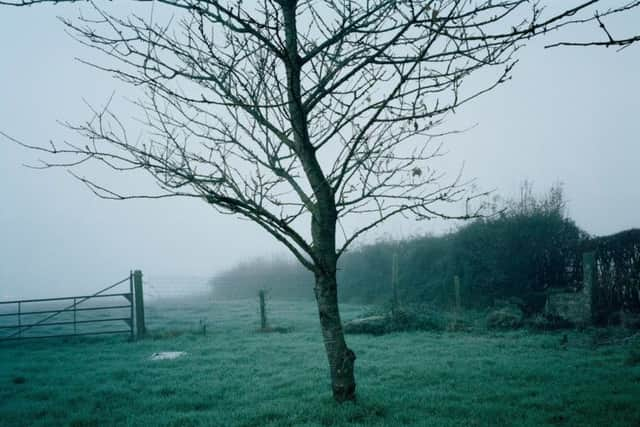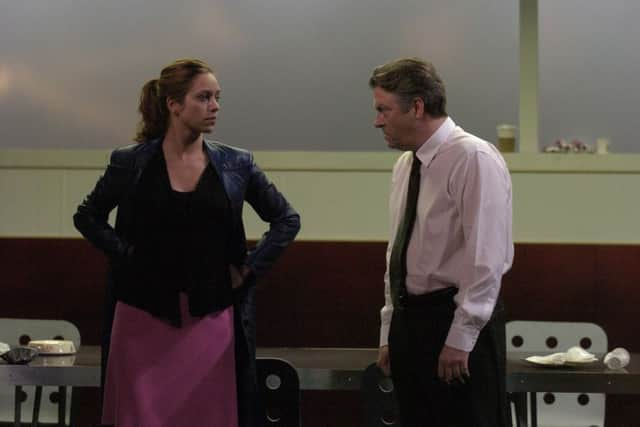Joyce McMillan: What the future holds for theatre in 2016


January
The year begins in a mood of confusion, with theatre companies still scratching their heads over the Scottish Governent’s enigmatic budget, which appeared to slash cultural funding by 9.4 per cent – the biggest cut of any area of government spending – but was followed by briefings to the effect that no-one was actually being cut by much more than 3 per cent. Rumours circulate that for reasons unknown, the government wishes to appear to be tough on arts funding, while in fact not being all that tough; and they begin to spread like wildfire after the opening night at the Lyceum of Conor McPherson’s pensive modern ghost tale The Weir, when a man in a heavy winter coat, bearing a strange resemblance to finance minister John Swinney, is seen at the stage door handing wads of grubby fivers to the cash-strapped theatre’s executive director, while muttering: “Don’t tell them I gave you this.”
February


In the first week of February, Rona Munro’s trilogy of James Plays returns to the Festival Theatre, Edinburgh, at the start of a global tour. At the after-show party, NTS boss Laurie Sansom and artistic director designate of the Lyceum, David Greig, call for the Scottish theatre community to be inventive about generating new income, in the wake of the government cuts, and to remember that government can also provide the arts with help in kind; a senior civil servant in the crowd is inspired to announce that in future, all such Scottish theatre gatherings will be provided with a supply of government-issue sausage rolls, freshly delivered from Victoria Quay.
March
Advertisement
Hide AdIn March, the Citizens’ Theatre presents a new version of Get Carter by Northern Stage, and puts out an innovative call for funding from those in the city who know exactly how it feels to be a local gangster returning to former haunts; the response is muted. At the end of the month, the entire Scottish theatre community boards a fleet of buses to Cardross, west of Dumbarton, where Angus Farquhar’s NVA organisation is staging an event called Hinterland, as part of its restoration project at the old St Peter’s Seminary, Kilmahew, an outstanding neglected masterpiece of Scottish modernist architecture. Asked how he finally managed to raise the money for this long-cherished project, Farquhar replies that it was simple: he just stopped using the word “theatre”, and the cash started to pour in.
April


In April, Edinburgh theatre is almost all about nostalgia and escapism, as screaming crowds of middle-aged women besiege the King’s Theatre, Edinburgh for performances of Jackie The Musical – about the famous girls’ magazine of the 1960s and 70s – and queues form at the Festival Theatre for the spectacular stage version of Mary Poppins. Meanwhile, legendary director Michael Boyd – former boss of the Tron and the Royal Shakespeare Company – returns to the Traverse with his production of eerie Quebec ghost story Right Now. Asked how Scottish theatre can generate more income, Boyd suggests that companies try doing some Shakespeare, since 2016 is the 400th anniversary of the Bard’s death; but apart from a one-day celebration at the Citizens’ on 23 April, no Shakespeare productions are forthcoming.
May
On 5 May – Holyrood election day – David Greig holds his last Two Minute Manifesto session at the Traverse before taking over as boss of the Lyceum, and the SNP wins another impressive overall majority in the Scottish Parliament; the John Swinney-like figure immediately appears at the Citizens’ Theatre with an entire suitcase of Royal Bank of Scotland notes, which he says is an anonymous contribution to the theatre’s current building project. Meanwhile, Liz Lochhead’s new play Thon Man Moliere, about the life of the great 17th century French playwright, opens at the Lyceum. In a pre-show talk, an audience member suggests that since Moliere’s main source of funding was Philippe I, Duke of Orléans, the brother of Louis XIV, a bit of royal patronage for Scottish theatre might not come amiss; but despite attempts to follow up this inspired suggestion, the palace remains silent.
June
In June, the National Theatre of Scotland tours revivals of two briliantly successful recent shows, Our Ladies Of Perpetual Succour – about a group of riotous Oban schoolgirls travelling to Edinburgh for a choir competition – and The Strange Undoing Of Prudencia Hart, David Greig’s postmodern Border ballad, best performed in a pub. In an effort to provide Scottish theatre with help in kind, the Scottish Government offers to buy a pub where the NTS can stage Prudencia Hart in perpetuity, like Agatha Christie’s The Mousetrap; NTS boss Laurie Sansom politely declines.
July
In July, as is traditional, nothing happens in Scottish theatre at all; apart, of course, from the Pitlochry summer season, which does not rely much on public subsidy. Asked what Scottish theatre should do to enhance its income, artistic director John Durnin says: “Get yourself a gorgeous Highland location and a big restaurant, and you’ll find your problems melt away like snow off Ben Vrackie.”
August
The Edinburgh Festival takes place amid cries of astonishment, as culture secretary Fiona Hyslop leaves politics to become the new Chief Executive of the Edinburgh Fringe. “Well, I’ve learned a lot about it over the years,” says Ms Hyslop, “and I thought it looked like more fun than being in goverment.” Meanwhile, the Scottish Government buys up the Royal High School in Edinburgh – still the subject of bitter disputes about its future – and offers it to Edinburgh International Festival director Fergus Linehan as help in kind, and a perfect future location for his spectacular start-of-festival outdoor events; to everyone’s amazement, Linehan accepts.
September
Advertisement
Hide AdThe National Theatre of Scotland moves to its new shed-like home at Rockvilla in Port Dundas, billed to become a base for all NTS backroom activities and educational projects. Within weeks, though, NTS boss Laurie Sansom shocks the Scottish
Government, Glasgow City Council and the Glasgow Licensing Board by announcing that following the sad demise of the Arches in May 2015, he has decided to launch Rockvilla as a late-night club and music venue, and to use the commercial proceeds to support the NTS’s work with young artists. Crowds flock to the Rockvilla club nights, and for the time being the GLB fails to think of a reason not to give it a licence.
October
Advertisement
Hide AdExcitement is intense as the acclaimed new touring version of Chitty Chitty Bang Bang – produced by former Festival Theatre boss John Stalker, and directed by former Dundee Rep artistic director James Brining – arrives at the Festival Theatre in Edinburgh. A Scottish Government representative turns up with a bag of Clydesdale Bank tenners, but is politely turned away; this is one show, he’s told, that can wash its own face, and fly its own magic car out over the audience, too.
November
Wind, rain, panto rehearsals. Nothing happens.
December
A mood of festive cheer sweeps over Scotland’s theatres, as the Scottish Government offers in-kind support to Jack And the Beanstalk at the King’s Theatre, Edinburgh in the shape of a giant beanstalk specially cultivated at the Royal Botanic Gardens’ outpost in Galloway; sadly, it collapses under the combined weight of panto stars Allan Stewart, Andy Gray and Grant Stott, and is never seen again. “It was an unfortunate incident,” says diplomatic Duncan Hendry, boss of the Festival and King’s Theatres, “but we still very much appreciate any support the Scottish Government can give us. And of course, like everyone else in Scottish theatre, we’re still searching for the magic beans that will bring us fame and fortune, in 2017.”
• All shows featured in this column will take place at the places and times mentioned, as will the NTS’s move to its new headquarters. Everything else, of course, is pure fiction